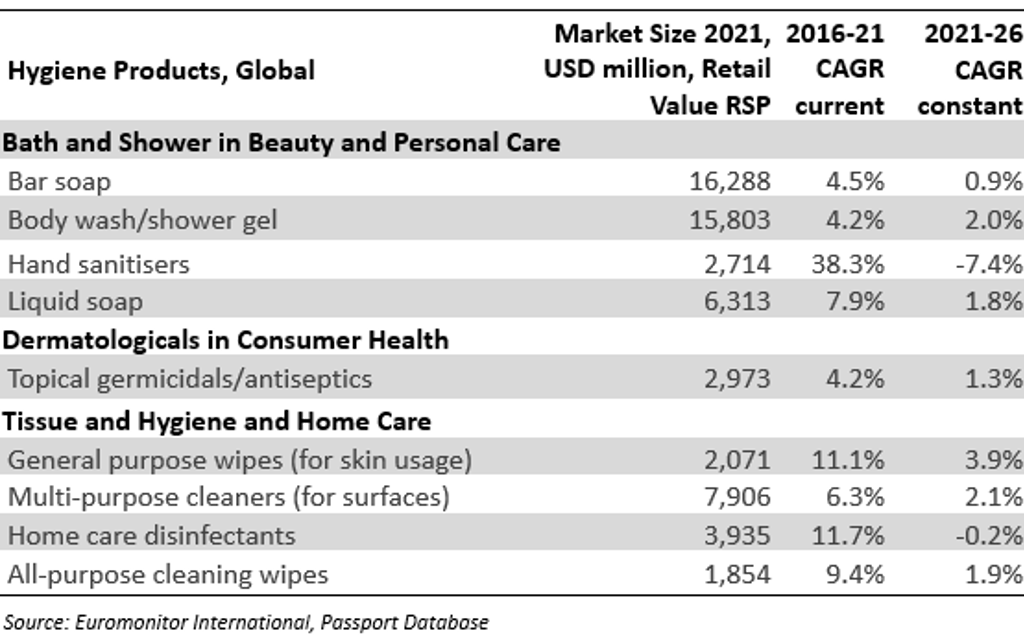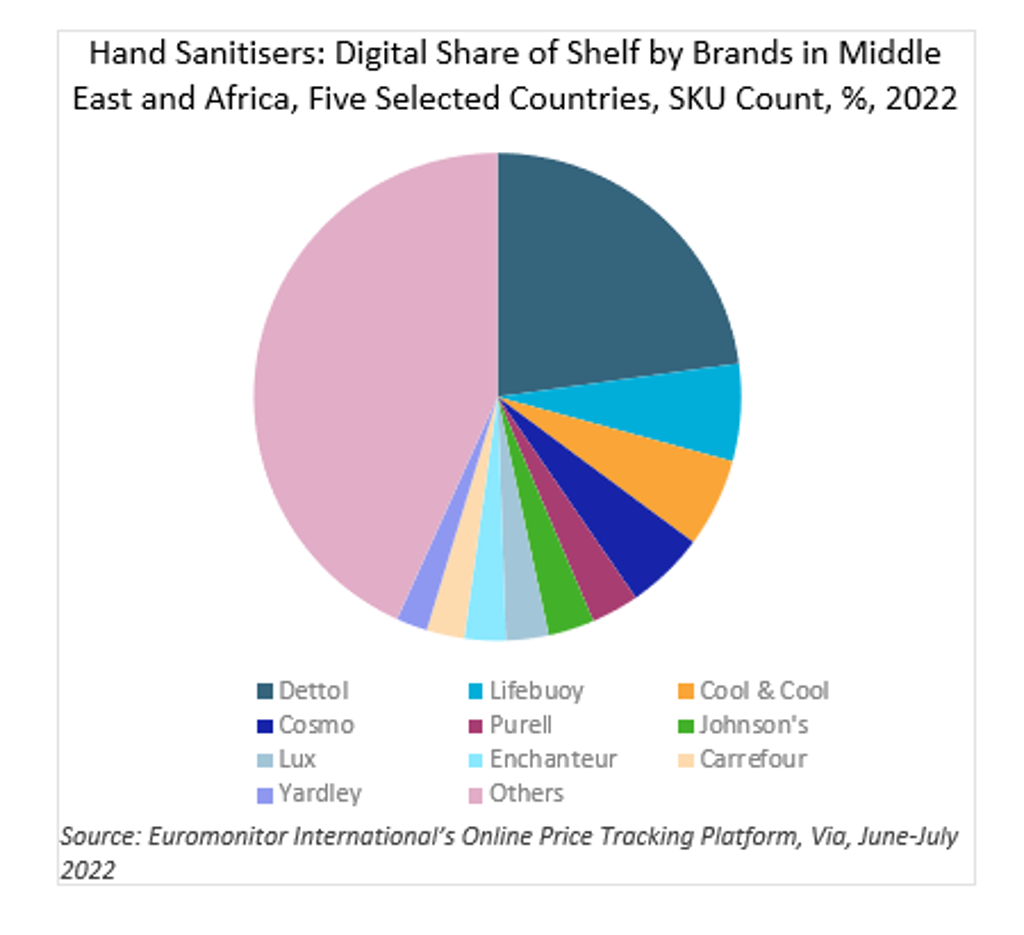Beauty and personal care continues to be a focal industry when it comes to personal grooming and self-care, including hygiene. Hand sanitisers play a crucial role in fulfilling the basic right to cleanliness globally, which is essential to preventing spread of infectious diseases and illness, spending less on healthcare, and avoiding the interruption of daily lifestyle routines. Hygiene products such as hand sanitisers experience a peak in demand during outbreaks such as COVID-19, and understanding such trends is crucial for businesses to ensure adequate supply to demand and product innovation translating into timely growth.
Hand sanitisers create value as an important part of holistic cleanliness
Intensified efforts by governments, institutions such as hospitals, and individuals to maintain hygiene were evident following the emergence of COVID-19. As a result, maintaining cleanliness and hygiene in one’s environment, for the individual and their family, has become even more ingrained in basic grooming practices, driven by the desire to maintain a well-kept appearance and avoiding disease or severe illness. Hence, hand sanitisers continue to create value for consumers as non-profit and profit organisations raise awareness of the product’s usage to break the chain of illness and disease, supporting hygiene practices for a safer world through convenient on-the-go formats sold across distribution channels. This has led to heightened demand for a wide variety of hand sanitisers, ranging from healthcare institutions to the retail space for end consumers.
Hand sanitisers complement hygiene-related product categories globally
The global hand sanitisers market was estimated to be worth USD2.7 billion in 2021, reaching a peak of USD4.3 billion in 2020 as consumers attempted to prevent the spread of COVID-19. Hand sanitisers displayed strong historic growth during 2016-2021 within hygiene-related product categories, registering a 38% CAGR, while home care disinfectants recorded a 12% CAGR in the same time period. The forecast, however, shows normalising of demand, amounting to USD1.9 billion by 2026.
Emerging markets projected to see sustained growth and development
While North America and Western Europe remained the largest regions for hand sanitisers in 2021, representing 42% and at 22% of the market respectively, regions such as Asia Pacific, Middle East and Africa followed at 14% each, Latin America at 4%, Eastern Europe at 2% and Australasia at 1%. The forecast CAGR for 2021-2026 portrays more resilient growth in emerging markets such as Middle East and Africa at 14% and Latin America at 2% in current value terms, as opportunities exist to offer competitively- priced hand sanitisers and expand on usage benefits. For example, while Middle Eastern consumers use hand sanitisers for protection, these products also serve as a ready-to-use antiseptic solution throughout markets on the continent of Africa. Well-established international players such as Dettol, Lifebuoy and Purell have leveraged these hygienic benefits and lead the category globally but also locally in Middle East and Africa. This development is in line with Euromonitor International's Product Claims and Positioning (PCP) System 2021, in which antibacterial continued to be the top claim within hand sanitisers, with other leading claims including dermatologically tested, skin health and waterless/water-saving.
Hand sanitisers to remain hero product to prevent illness, its severity and spread
Prevention and illness treatment, desire for cleanliness and hygiene, and occasions such as travel and tourism will lead to further opportunities. Healthcare institutions already use hand sanitisers to remove disease-causing organisms. In regions with water shortage and inaccessibility to frequent hand washing, hand sanitisers can provide an opportunity to limit infectious diseases and illnesses for the present and the long term, which is highly beneficial to markets in sub-Saharan Africa. Thus, hand sanitisers will remain a hero product along with bath and shower products such as liquid soap, bar soap and shower gel, serving the purpose of long-term holistic protection and hygiene practices. Aided by governments, health institutions, organisations, brands and consumer awareness, a wide range of well-regulated, efficient formulas at various prices will increase the long-term penetration of hand sanitisers.
Find the full report, Hand Sanitisers: The Story Ahead here.
